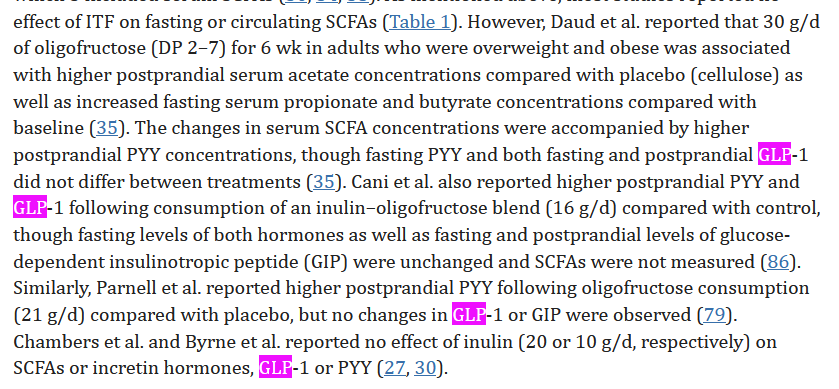This is Nicholas Norwitz, who can get a bit tiring. This is an excerpt:
GLP-1 agonist medications , like Ozempic, mimic a natural hormone (GLP-1) that is crucial for metabolic health. Interestingly, insulin-resistance disorders, including obesity and diabetes, are characterized by GLP-1 deficiency.
So - at a high level - it makes sense to " replace what’s missing " as a form of therapy.
Think about it by way of analogy… if you have hypothyroidism, you treat with thyroid hormone…. if you have adrenal insufficiency… you treat with corticosteroids.
Make sense, right?
But that doesn’t answer the question: What is the CAUSE of GLP-1 deficiency in obesity, diabetes, metabolic syndrome and insulin-resistance disorders?
There have been some hand-wavy explanations in the past, like that “inflammation” harms GLP-1 producing L-cells or that inflammatory T-cells “mop up” GLP-1 in the gut, decreasing bioavailability.
But I like precision… causal pathways… specific mechanisms. Now, FINALLY (!) we have at least one…
These New Data…
These data, published in Nature Metabolism , use a mouse model to demonstrate a causal pathway whereby:
- An obesogenic (Westernized) diet increases levels of the gut bacteria Desulfovibrio .
- Desulfovibrio generates hydrogen sulfide in the gut.
- This hydrogen sulfide overwhelms detoxification mechanisms in the L-cells that make GLP-1, leading to damage to the L-cells’ mitochondria.
- The resulting energy (ATP) deficit in the GLP-1 producing L-cells, leads to a GLP-1 deficit.
- The GLP-1 deficit leads to metabolic dysfunction.
Any thoughts on this?
[Just because I’m being a wordy smart-ass today, hydrogen sulfide certainly overwhelms everything else in the room …  ]
]
And here’s a little kicker, directly from the Nature Metabolism study, which I cannot access beyond the abstract:
Remarkably, blocking Desulfovibrio and H2S with an over-the-counter drug, bismuth subsalicylate, improves GLP-1 production and ameliorates diet-induced metabolic disorder in male mice.
Bismuth subsalicylate = … pepto bismol.
Take pepto bismol. Stop having stinky gas. Cure diabetes …




 )
)